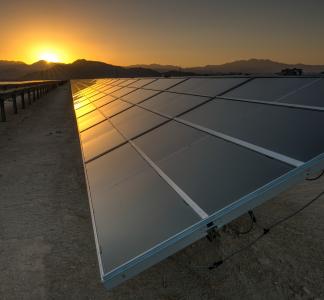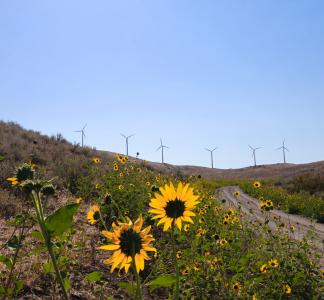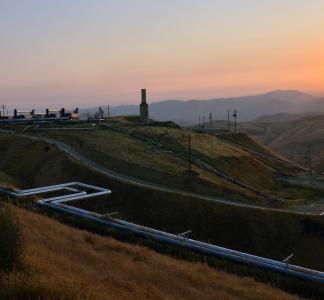Three stories show the power of renewable energy on public lands
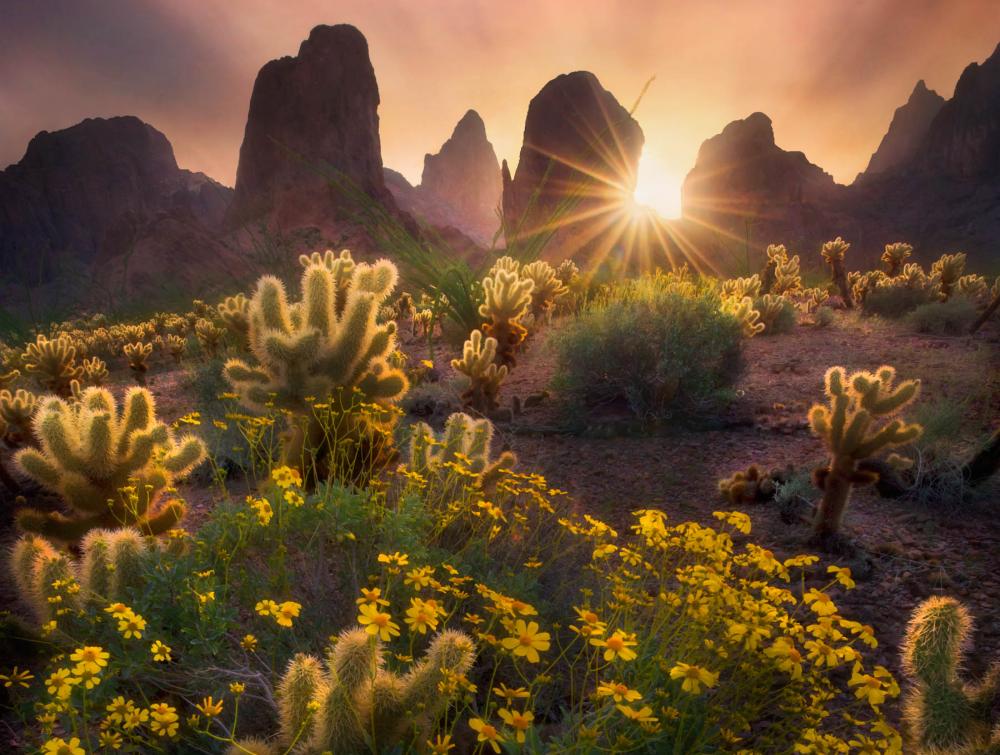
Ten West Link transmission line will deliver clean energy while avoiding Kofa National Wildlife Refuge in Arizona.
Marc Adamus
Renewable energy projects can do more than generate clean energy
It’s easy to root for responsible renewable energy on public lands. We desperately need a cleaner energy alternative to the fossil fuels that are driving the climate crisis. But it’s even easier when we see the positive impact these projects can have on communities, lands and wildlife.
The stories below show renewables making communities healthier, giving new life to damaged landscapes and generating power while preserving local wildlife. They make the case for unlocking the true potential of public lands for renewable energy development.
1. Solar plant brings breath of fresh air to most polluted county
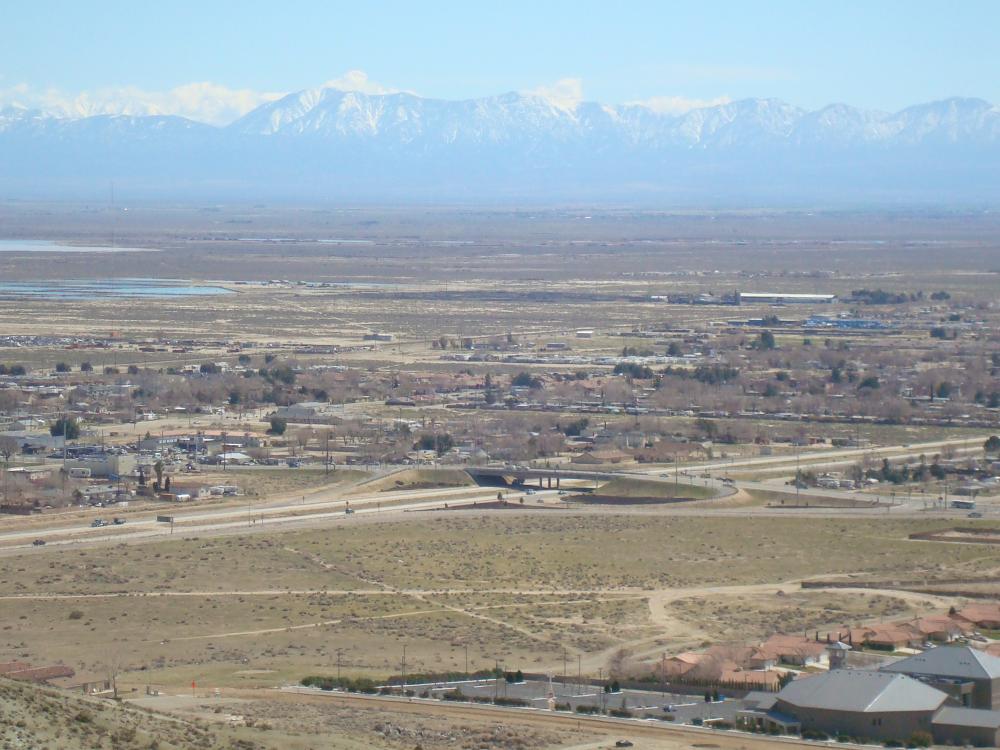
Rosamond in Kern County, California. The San Gabriel Mountains are in the background.
SkiDragon
For many years, Kern County, California, has ranked among the most polluted counties in the country, just recently landing the #1 spot for year-round particle pollution. A lot of the toxic air comes from vast oil and gas development in the region, where 80 percent of California’s oil is produced. Poor air quality can trigger a wide range of health issues, including respiratory problems, migraines and nosebleeds.
While the number of oil wells continues to rise in Kern County, a surge of renewable energy could help clean the air from pollutants and tackle the climate crisis. A new solar plant near Rosamond is the perfect example of what the future could look like. The Camino Solar Project has been carefully planned to help power more than 13,000 homes while generating virtually zero pollutants and minimizing its environmental impact.
The solar plant is being built near the city of Rosamond, on land designated for renewable energy development as part of the Desert Renewable Energy Conservation Plan (DRECP)—Bureau of Land Management’s blueprint for conservation and renewable energy in the Mojave Desert. What’s more, the Camino Solar Project will use the existing infrastructure of a wind farm, minimizing environmental impact.
2. Desert solar farm powers the internet with reduced impact
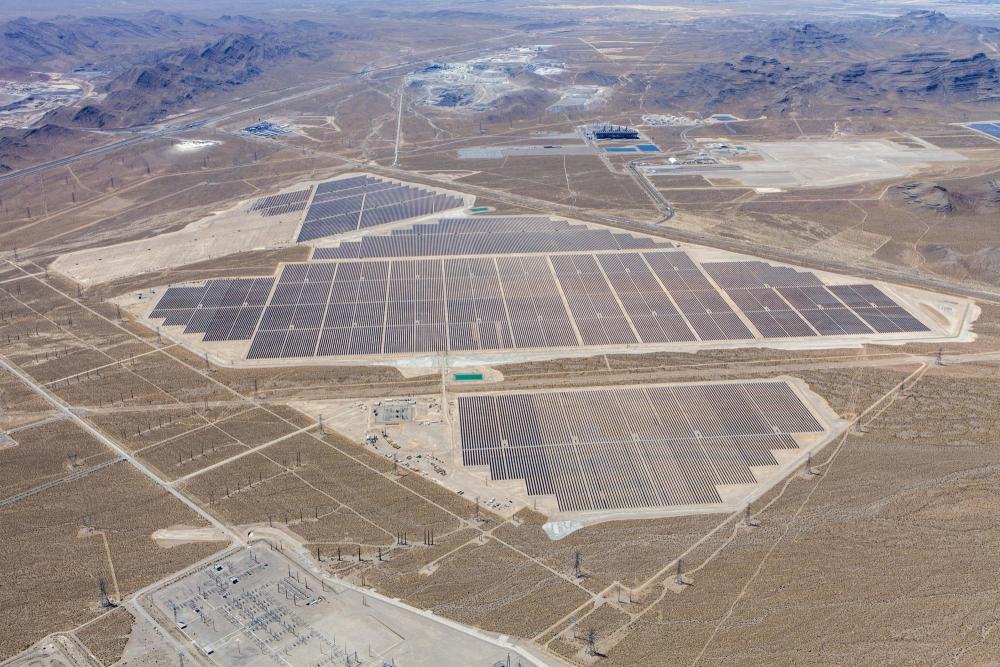
The Switch Solar power plants support some of the nations’ largest data centers.
Switch Solar
As you read this story, it’s entirely possible the power fueling your internet connection is coming from the sun. Since 2017, two large solar plants located just outside Las Vegas have been generating 179 MW of clean energy that supports some of the nations’ largest data centers. These facilities house servers, cooling systems and other infrastructure that keep the internet running. This type of equipment requires a surprising amount of power—estimates show the internet will eat up 10% of the nation’s energy by 2030.
The solar plants, named “Switch Station 1” and “Switch Station 2,” cover the equivalent of about 1,800 football fields in the desert, but the environmental impact has been minimized thanks to smart planning. They were built in the Dry Lake Solar Energy Zone (SEZ), an area specially designated by the Bureau of Land Management for large renewable energy projects. The land already has transmission lines, industrial facilities and roads that reduce the area’s value for wildlife and limit the need for new support infrastructure.
The upfront planning for the Dry Lake SEZ allowed the projects to be permitted in less than half the average time. What’s more, these solar plants also included funding from the project developers to conduct mitigation projects to offset impacts, investing in nearby habitat improvement and preservation for sensitive species such as the Mojave desert tortoise.
3. Transmission line delivers clean energy, avoids wildlife refuge
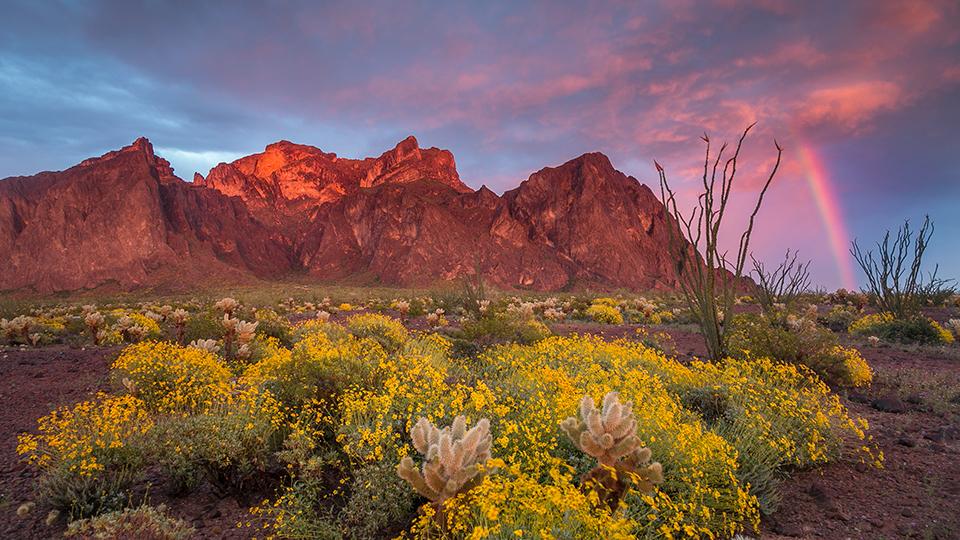
Ten West Link transmission line will deliver clean energy while avoiding Kofa National Wildlife Refuge in Arizona.
Paul Gill (CC BY-SA 4.0)
There’s a key component of solar, wind and geothermal projects that doesn't get a lot of attention: the transmission lines that carry the clean energy generated to towns, homes and businesses.
Among them is the Ten West Link transmission line, which by 2021 will stretch 125 miles between Arizona and California. The project is crucial to deliver energy between the two states, but the initial plan presented serious conservation risks. The route mapped by the developer would run through the beautiful Kofa National Wildlife Refuge.
The sensitive refuge covers more than 500,000 acres of desert land between the Kofa Mountains and the Castle Dome Mountains in Arizona. Wildlands in the refuge are considered crucial habitat for the endangered desert bighorn sheep and other wildlife, including the sonoran pronghorn, bats and other pollinators. Not surprisingly, the route was vehemently opposed by conservation groups.
Meanwhile, the local community was concerned with the project's route since it was going to run through Kofa National Wildlife Refuge and Johnson Canyon, a valued recreation area. The Wilderness Society successfully worked with local OHV enthusiasts to voice their opposition in a letter to the Bureau of Land Management during the Draft Environmental Impact Statement public process.
Thankfully, a new route was found following the West-wide Energy Corridor along Interstate 10. The alternative avoids environmentally sensitive areas, recreation areas, population centers and important cultural resources near the Mule Mountains south of Blythe, California. It also takes advantage of existing infrastructure, minimizing the project’s environmental footprint.
4. Bonus: Solar plant brings rays of hope to community after mine closure
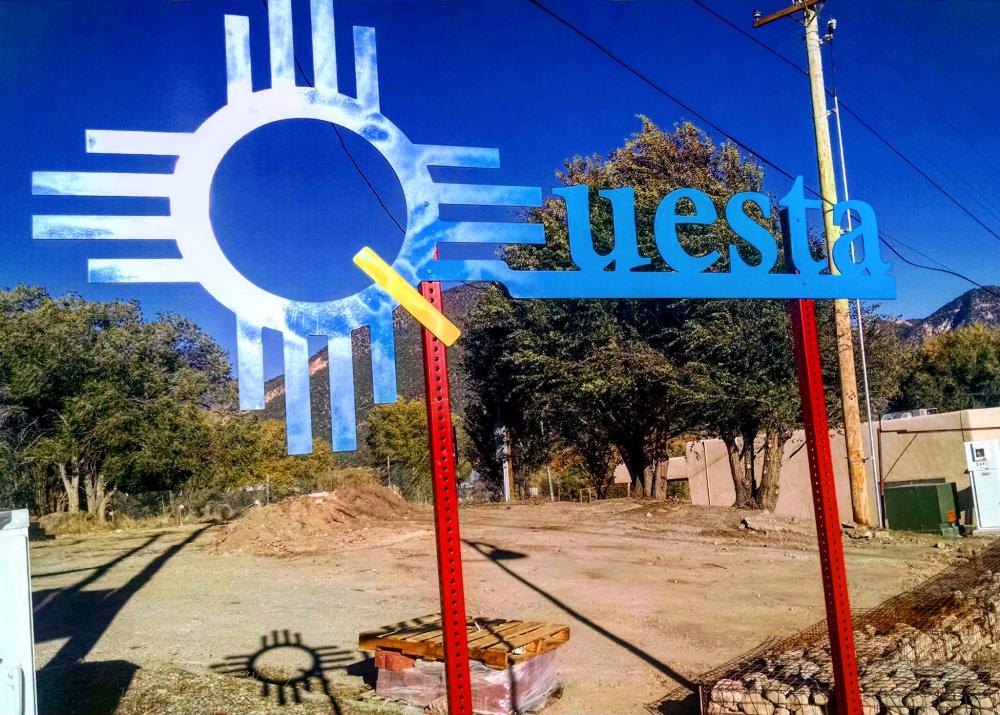
The Questa project shows the potential for developing renewables on mines, landfills and other contaminated sites.
EFreiboth
While this last story takes place on private lands, it’s a great example of what the future of responsible renewable energy can look like on public lands.
For almost 100 years, a molybdenum mine was at the center of the small village of Questa, located on the Red River bank in New Mexico. At its height, the development employed one-quarter of the town’s two thousand residents. However, the mine was also leaving deep scars on the landscape and hurting the health of the community.
Mining operations cut open more than 1,000 acres of mountain faces, released clouds of dust into the air and spilled waste that changed the color of the Red River from red to blue. It wasn’t long until residents and livestock started showing health problems from drinking contaminated groundwater.
The mine finally closed in 2014, thanks to pressure from community members and environmental groups, coupled with low molybdenum prices. On the mine grounds that seemed beyond repair, a much cleaner industry emerged: a high-tech solar plant, with capacity to produce 1 megawatt of energy annually, enough to power about 150 homes.
While small, the renewable energy project - which The Wilderness Society supported - led to job creation and brought much-needed hope to the community. About half of the mine’s former 300 workers were immediately rehired to clean up the old site. Meanwhile, Questa’s newfound commitment to clean energy helped attract sustainable and outdoor businesses and jump-start the local recreation industry based on the town’s proximity to Rio Grande del Norte National Monument, Columbine-Hondo Wilderness Area, and Eagle Rock Lake.
The Questa project shows the great potential across the country for developing renewables on mines, landfills and other contaminated sites on both private and public lands while leaving sensitive lands free of development.
